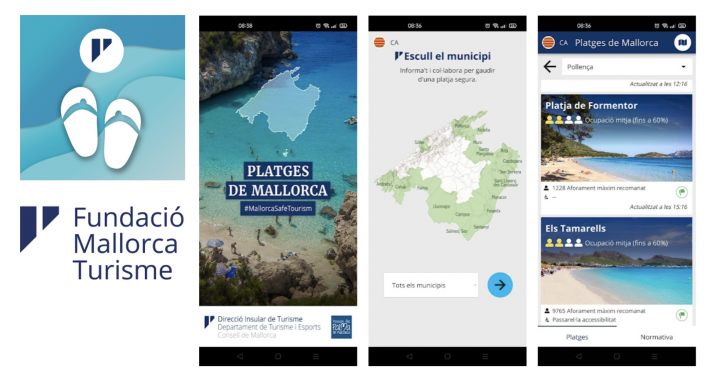A richly studded diadem of historical sites
Palma is the capital and largest city in the Balearic Islands covering 208.63Km2 and has 416,065 inhabitants. With over 44,000 hotel beds, Palma is a must-visit for the island’s more than 13 million visitors. Palma is a modern, accessible, and sustainable cosmopolitan city that offers an array of cultural, culinary, sporting and leisure options. Visits to the city should include a tour of its most important historical buildings and patios, outstanding religious architecture and iconic buildings, museums, art galleries and Bellver Castle which is linked to the city’s green belt. Its outstanding beaches, coves and climate have made Palma one of the world's most loved tourism destinations; the city has five accessible sand beaches and eight other bathing areas with crystal clear waters.
Modern, accessible and sustainable cosmopolitan city
Palma’s city council holds monthly meetings with various representatives to focus on accessibility improvements. To make public transport even more accessible for blind people, floor-level braille signs have been set up at public network stations to ensure safer movement. Palma uses a special signage system for its cultural sites that uses new technologies: augmented reality, QR codes, mobile apps. It features audio guides and videos with audio descriptions, subtitles, and sign language. Five of the city’s beaches are inclusively certified by the AENOR UNE 170001-2 standard that guarantees equal accessibility opportunities. Palma also implements different projects to mitigate climate change. An example is the “Green Corridor” project in collaboration with Palma’s parks; trees are being planted around the city and special digital panels have been set-up to monitor this. In 2017, Palma launched an e-mobile segregated waste collection service. Thanks to this, in 2019, recycling in Palma increased from 18% to 71.5%. 2016 saw the implementation of the largest free Wi-Fi network in Europe, with 350 hotspots around the city. This also provides a huge amount of data about visitors and their needs. SAFEBEACHES App is used to control the occupancy rate on beaches, allowing people to see how busy each beach is. The app received the award for best digital solution for tourism and security at the Digital Tourists 2020 awards. Every year, Palma holds La Nit de l’Art, a unique event which incorporates the spirit of traditional Spanish fiestas to celebrate the buzz of gallery openings. Moreover, between 2017-2019, the Island Management Plan for Cultural Heritage included more than 80 actions for the protection and dissemination of heritage.
Combatting water scarcity
Water scarcity is Palma’s main environmental concern, but the city has implemented several smart practices to prevent this. EMAYA (a municipal company) is in charge of Palma’s Water and Waste Management, managing 30,000,000m3 of water per year and collecting more than 200,000 tons of waste through segregated waste collection. Palma’s Wastewater Treatment Plant reuses 100% of treated water and avoids discharge to the sea. This will be supported by a new plant expected to cost 118 million euros that will reduce the sewage drained into the sea by 90%. A new stormwater detention vault is also being built to avoid waste discharge into the sea when there are storms. The city is working on The Urban Forest Project to close the water cycle and reduce the “heat island effect” by reintroducing nature to the city. By 2030, the city council intends to run its infrastructures on 100% renewable energy. By the end of 2021, EMAYA will be running 100 electric vehicles, reducing CO2 by more than 23 tonnes a year.

How technology enhances the beach experience
Five of the city’s beaches are inclusively certified by the AENOR UNE 170001-2 standard that guarantees equal accessibility opportunities. 'Platges Secures' (meaning 'Safe Beaches') is a new app developed by Palma de Mallorca's town council to ensure the safety of beachgoers. You'll be able to know just how crowded the beach is in real time, plus learn all about the current safety measures and protocols.
Four occupancy levels have been devised using a colour code: green (less than 30% ) and yellow (30% to 60%) mean that safety is ensured, while orange (more than 60%) indicates that there's a risk to go over the safe occupancy level. When the code is red, there's more than 90% of the recommended number of people on the beach and it'll probably be shut down by the authorities.
The app received the award for best digital solution for tourism and security at the Digital Tourists 2020 awards. Download the app here.
Find out more: https://mallorcasafetourism.com




